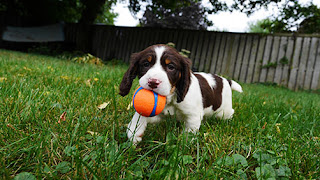Are bones healthy for dogs?
Generally, bones are not safe or healthy for dogs. Most bones are dangerous for dogs because they can cause several health problems. While not all pet experts agree on this topic, most veterinary health professionals can tell you plenty of bone-related horror stories. The longtime assumption that bones are appropriate canine treats is off track. First of all, cooked bones are NEVER appropriate. Raw bones, on the other hand, are a subject of debate because they are softer and potentially more digestible. However, raw bones are not without risk. The Dangers of Bones for Dogs Take a look at the following potential complications associated with bones and dogs. These problems can occur in dogs after eating bones, even if they are raw bones. • Fractured teeth – Bones are hard enough to cause your dog’s teeth to crack, sometimes necessitating root canals or tooth extractions. • Oral injuries – The sharp edges of bones can cut your dog’s gums, tongue, and other oral mucous membranes. Not only
